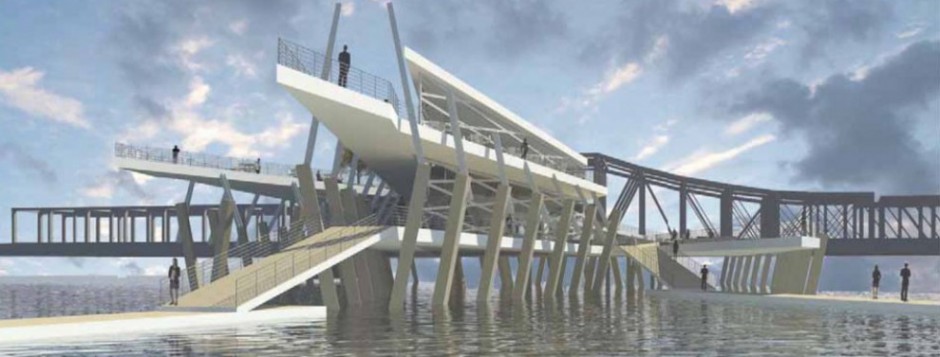Building Systems: Mechanical, Electrical, Plumbing, Fire Safety & Communication Systems, Lighting & Acoustics
Wendell C. Edwards
Chapter 11, pg. 260-261
Hydraulic Elevators:
• They are used in low rise buildings up to 50 feet high or 5 stories maximum.
• Speeds vary from 25 to 150 fpm (Feet Per Minute)
• Pumps provide oil pressure for lift. An electric motor pumps the oil into a cylinder to move the piston.
There are 3 types of Hydraulic Elevator
1. In-Ground: This type has a cylinder that extends into the ground the same height to which the elevator is to be lifted.
2. Hole-less: This type uses telescoping pistons on one or both sides of the cab to lift it.The cylinder stands within the hoist way and does not require a drilled hole. This class is typically limited to under 40’ of travel.
3. Roped: This type is similar to a traction type elevator. The cab is elevated by an attached rope that is pulled by pistons.
No wires, cables, or overhead machinery is required for the In-Ground and Hole-less types. A machine room is required to house both the oil storage tank and the pump.
The slow speeds of hydraulic elevators makes the ideal for freight elevators up to 50 tons.
The inefficiency of hydraulic elevators lies in the fact that the energy used to both lift the cab and overcome friction has no counterweight, thus no way of recouping some of the energy expended.
https://www.isr.umd.edu/~austin/ense621.d/projects04.d/project-elevator.html (System requirements)
http://longelevator.com/images/hydraulg.jpg (In ground)
http://www.bpelevator.com/html/Diagrams.html (BP Elevator Co.)
http://www.landmarkelevator.com/wp-content/uploads/2013/03/elevator313.jpg (Picture for cover page)
http://www.foxelevators.com/hydraulic-elevator.html (Fox Elevators)
http://www.texashydraulics.com/images/construction-grade-cylinder.png (Section of cylinder)
http://www.edgeroamer.com/sweethaven/mechanics/hydraulics01/default.asp?iNum=0401 (How hydraulic cylinders work)
b. Double-Acting Cylinder.This cylinder (Figure 4-2 must have ports at the head and rod ends. Pumping oil into the head end moves a piston to extend a rod while any oil in the rod end is pushed out and returned to a reservoir. To retract a rod, flow is reversed. Oil from a pump goes into a rod end, and a head-end port is connected to allow return flow. The flow direction to and from a double-acting cylinder can be controlled by a double-acting directional valve or by actuating a control of a reversible pump.
http://static.howstuffworks.com/flash/elevator-hydraulic.swf (Working Hydraulic Elevator Diagram)
http://science.howstuffworks.com/transport/engines-equipment/elevator1.htm (how hydraulics work)
The cylinder is connected to a fluid-pumping system (typically, hydraulic systems like this use oil, but other incompressible fluids would also work). The hydraulic system has three parts:
- A tank (the fluid reservoir)
- A pump, powered by an electric motor
- A valve between the cylinder and the reservoir
The pump forces fluid from the tank into a pipe leading to the cylinder. When the valve is opened, the pressurized fluid will take the path of least resistance and return to the fluid reservoir. But when the valve is closed, the pressurized fluid has nowhere to go except into the cylinder. As the fluid collects in the cylinder, it pushes the piston up, lifting the elevator car.
When the car approaches the correct floor, the control system sends a signal to the electric motor to gradually shut off the pump. With the pump off, there is no more fluid flowing into the cylinder, but the fluid that is already in the cylinder cannot escape (it can’t flow backward through the pump, and the valve is still closed). The piston rests on the fluid, and the car stays where it is.
To lower the car, the elevator control system sends a signal to the valve. The valve is operated electrically by a basic solenoid switch (check out How Electromagnets Work for information on solenoids). When the solenoid opens the valve, the fluid that has collected in the cylinder can flow out into the fluid reservoir. The weight of the car and the cargo pushes down on the piston, which drives the fluid into the reservoir. The car gradually descends. To stop the car at a lower floor, the control system closes the valve again.
http://science.howstuffworks.com/transport/engines-equipment/elevator6.htm (Safety)
Safety Systems: More Backups
Elevators also have electromagnetic brakes that engage when the car comes to a stop. The electromagnets actually keep the brakes in the open position, instead of closing them. With this design, the brakes will automatically clamp shut if the elevator loses power.
Elevators also have automatic braking systems near the top and the bottom of the elevator shaft. If the elevator car moves too far in either direction, the brake brings it to a stop.
http://science.howstuffworks.com/transport/engines-equipment/elevator2.htm (Pros and Cons)
The main advantage of hydraulic systems is they can easily multiply the relatively weak force of the pump to generate the stronger force needed to lift the elevator car (see How Hydraulic Machines Work to find out how).
But these systems suffer from two major disadvantages. The main problem is the size of the equipment. In order for the elevator car to be able to reach higher floors, you have to make the piston longer. The cylinder has to be a little bit longer than the piston, of course, since the piston needs to be able to collapse all the way when the car is at the bottom floor. In short, more stories means a longer cylinder.
The problem is that the entire cylinder structure must be buried below the bottom elevator stop. This means you have to dig deeper as you build higher. This is an expensive project with buildings over a few stories tall. To install a hydraulic elevator in a 10-story building, for example, you would need to dig at least nine stories deep!
The other disadvantage of hydraulic elevators is that they’re fairly inefficient. It takes a lot of energy to raise an elevator car several stories, and in a standard hydraulic elevator, there is no way to store this energy. The energy of position (potential energy) only works to push the fluid back into the reservoir. To raise the elevator car again, the hydraulic system has to generate the energy all over again.



